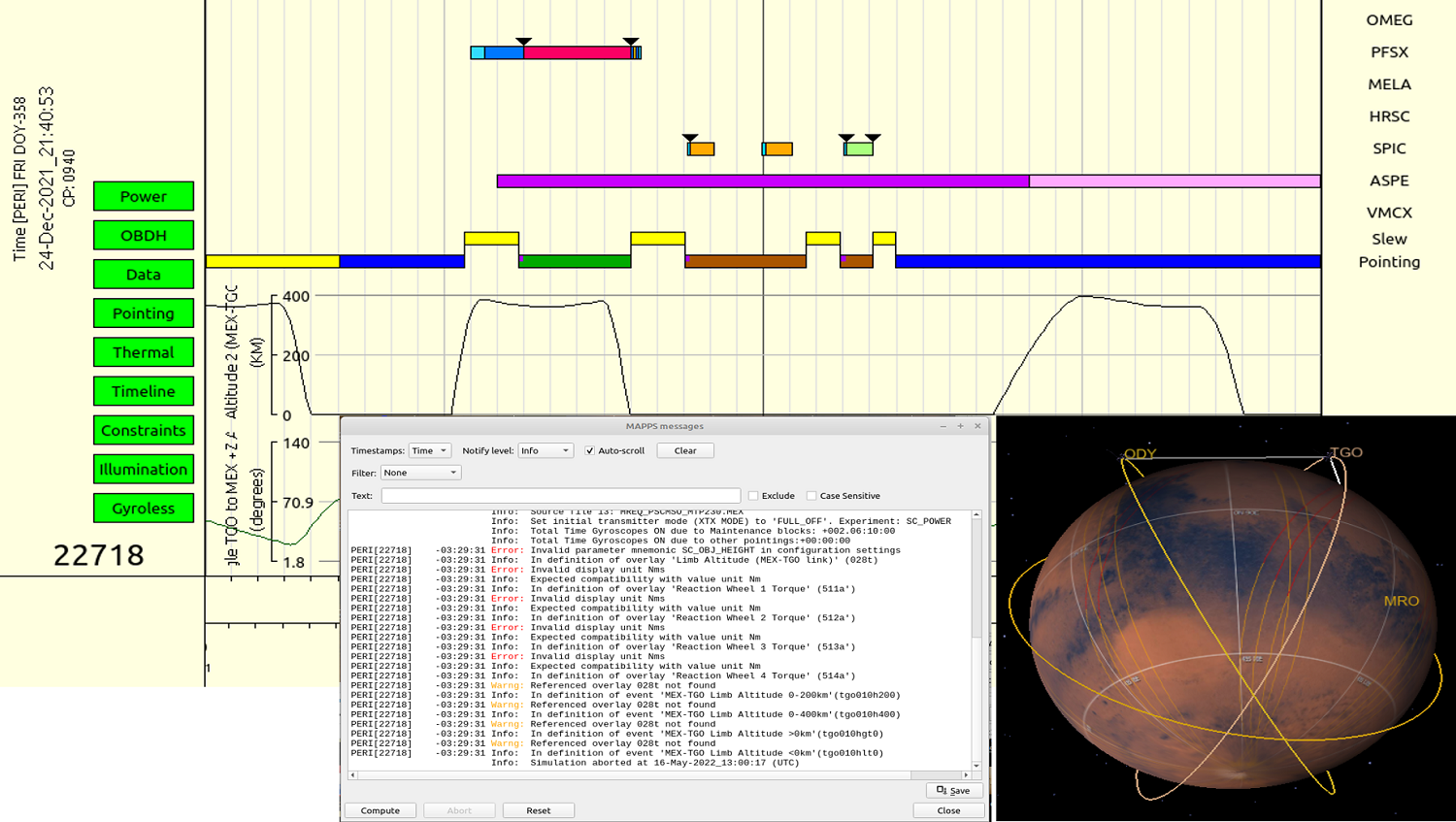MAPPS as a multi-mission and multi-body Science Planning and Simulation Tool for ESA solar system missions
- 1European Space Astronomy Centre, Spain (carlos.muniz@sciops.esa.int)
- *A full list of authors appears at the end of the abstract
The Mission Analysis and Payload Planning System (MAPPS) is a multi-mission software system developed during the last 20 years to support the science operations planning for the ESA solar system missions at the European Space Astronomy Centre (ESAC) near Madrid.
Developed initially only to visualise the coverage of MEX experiments onto the Martian surface. The tool has been evolved progressively to satisfy planning requirements for the different missions that have been launched in the last two decades: SMART-1, Venus Express, Rosetta, Mars Express, Exomars TGO, Bepi Colombo, Solar Orbiter, Juice and EnVision.
The planning requirements sometimes are specific to a mission and on other occasions they are contradicting. As an example, consider the power and thermal requirements of a mission like Bepi Colombo, very close to the sun, in contrast to those same requirements for a mission like Juice, very far away. The complexity of these requirement implies that the software needs to be very configurable and continuously adapting to the needs of each mission.
In recent years, there has been the need to extend even further the tool to support multi-body and constellation coordination capabilities.
In the case of Juice, the spacecraft will spend many months orbiting Jupiter and three of its Jovian moons. This has required a big effort to modify the existing features and observations in MAPPS that were initially developed for a central body to be able to cope with several bodies.
In the case of Mars, the arrival of new spacecrafts and rovers has broadened what can be done scientifically as well as opening the international collaboration among agencies. MAPPS has been extended to facilitate the collaboration with other Mars missions, in particular the new radio-science experiment between MEX-TGO [1], various communication tests between ESA and NASA orbiters, and the regular data relays in support of all surface assets, including the new Chinese Zhurong mission.
Here we present how MAPPS has contributed and supports the Science Ground Segment teams in ESA to achieve their goal of planning scientific operations in an efficient and optimised way, together with the new features implemented for the ever more demanding needs of the new scientific missions.
[1] Cardesin Moinelo, A. et al: First year of coordinated science observations by Mars Express and ExoMars 2016 Trace Gas Orbiter, ICARUS 353, 2021

MEX SGS Team, Bepi Colombo SGS Team, TGO SGS Team, Juice SGS Team, Solar Orbiter SGS Team, EnVision SGS Team
How to cite: Muñiz Solaz, C., Cardesin-Moinelo, A., Nespoli, F., Martin, P., Marin-Yaseli de la Parra, J., Merrit, D., Sierra, M., and Esquej, P. and the ESA Planetary Science Operations Centres: MAPPS as a multi-mission and multi-body Science Planning and Simulation Tool for ESA solar system missions, Europlanet Science Congress 2022, Granada, Spain, 18–23 Sep 2022, EPSC2022-294, https://doi.org/10.5194/epsc2022-294, 2022.

